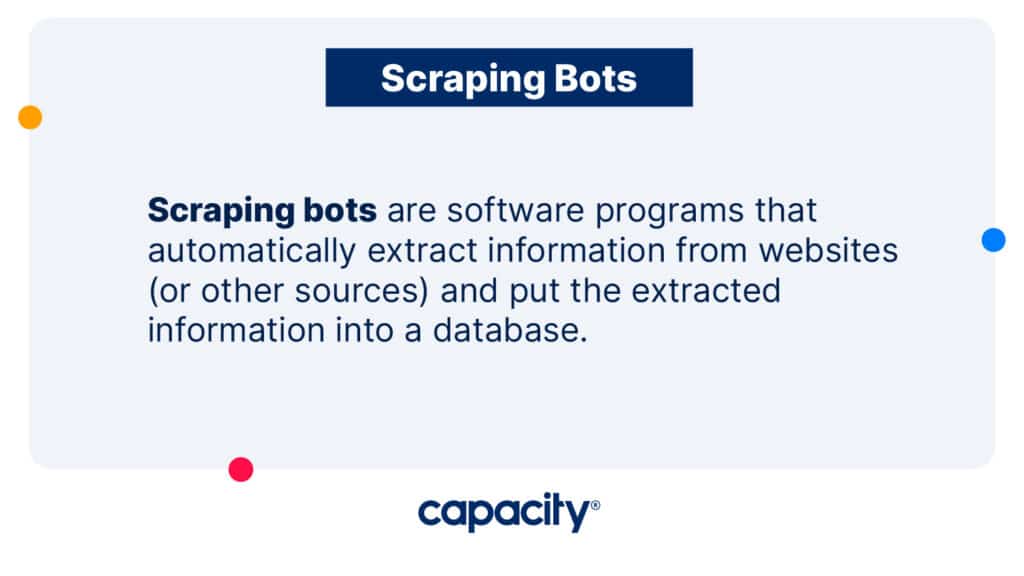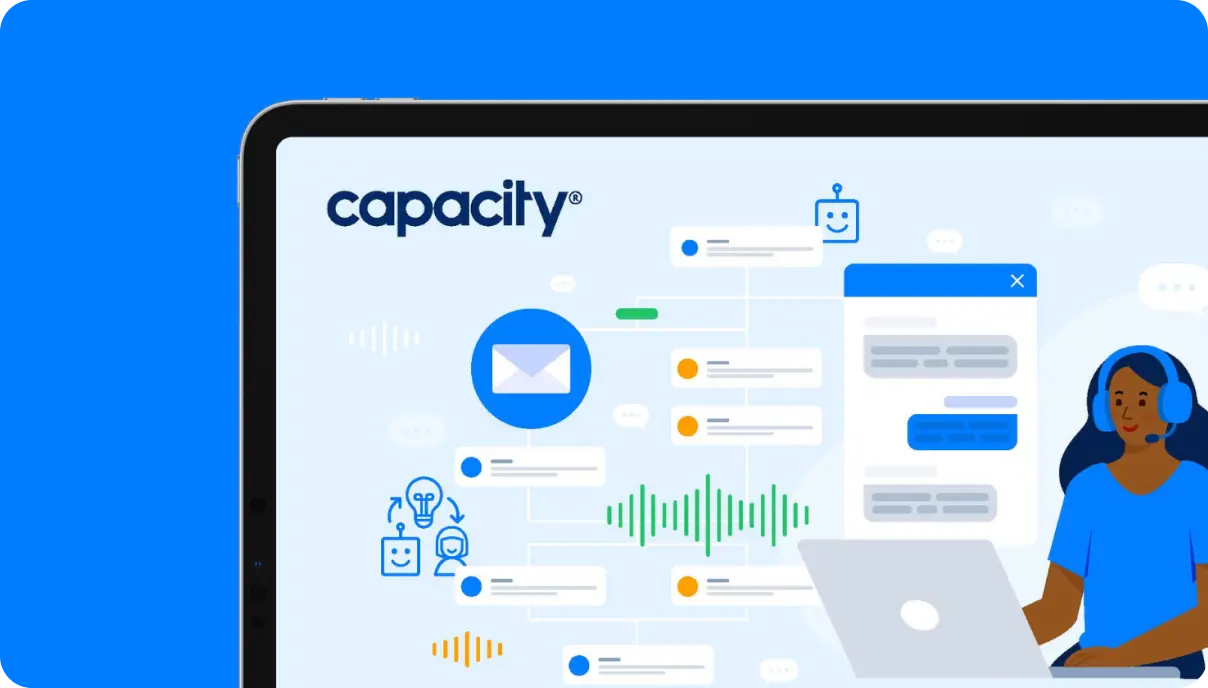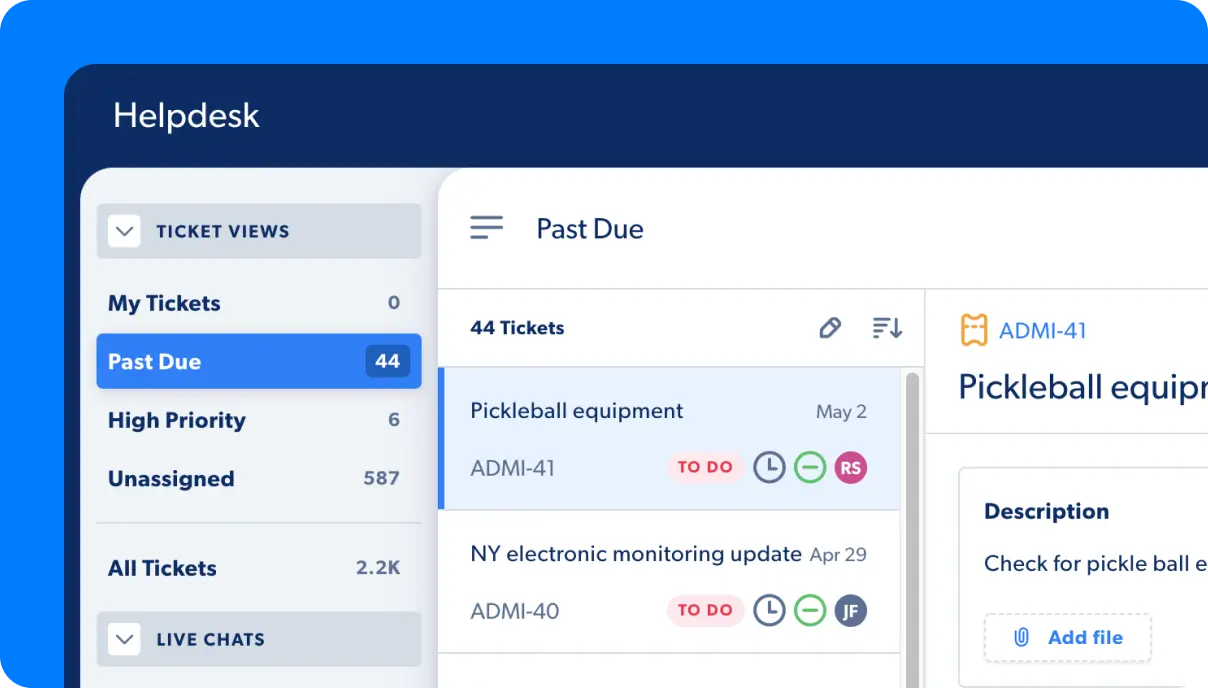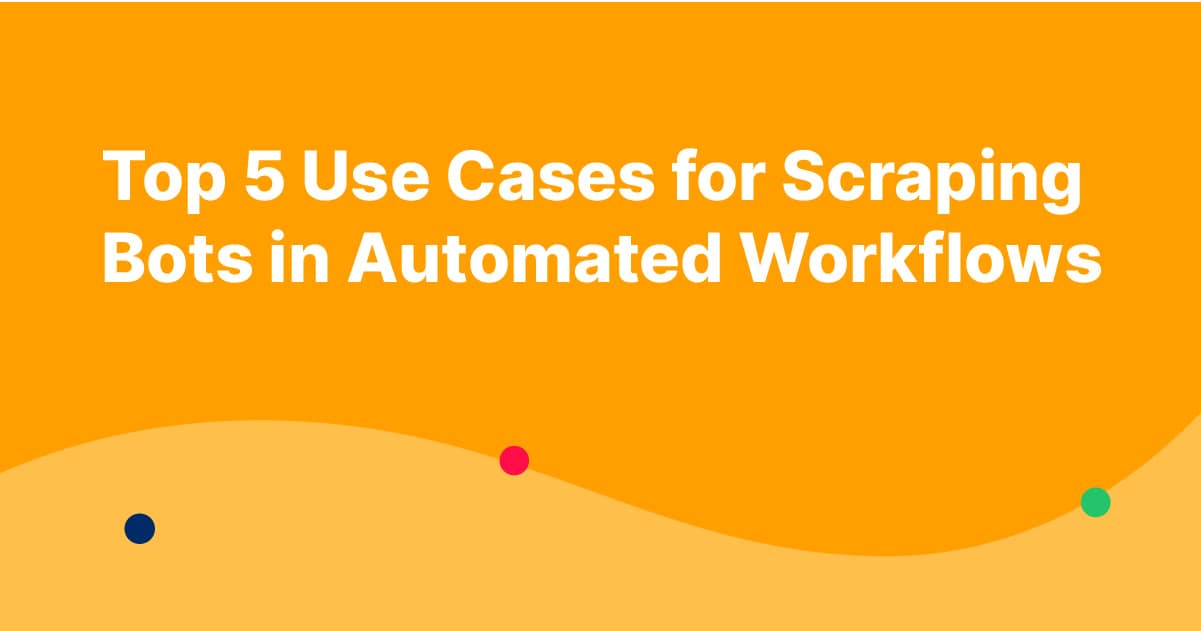It’s pretty amazing how businesses are moving towards automation and artificial intelligence chatbots. With all these new tools available, streamlining operations is becoming more accessible and effortless. One technology that has gained popularity in recent years is scraping bots.
Scraping bots are software programs that automatically extract data from websites or other sources. They can be used for a wide variety of purposes, from gathering information to automating simple tasks or even completing complex processes.
Sound incredible? Without further ado, let’s dive into the world of scraping bots. We’ll talk about what they are, how they’re different from other AI tools, and check out the top 5 ways they’re being used.

Automate Your Work
Capacity’s enterprise AI chatbot can help:
- Answer FAQs anytime, anywhere
- Find relevant documents within seconds
- Give surveys and collect feedback
What Is A Scraping Bot?
Let’s start with the basics.
Scraping is the process of extracting data from web pages. A scraper is a program that uses programming code to remove data from a website and put it into a database.
Scraping bots are programs designed to complete repetitive online tasks, such as collecting and organizing information from websites. They can be used for many different purposes but are often used in automated workflows.

A common use for scraping bots is for data collection, especially when there are too many sources to collect information from manually. The information gained from this process can subsequently be utilized to guide operational choices. In essence, it’s a tool for automating mundane but necessary chores, which may save a lot of time and effort.
Scraping Bot vs. AI Chatbot vs. Intelligent Document Processing
Although scraping bots are similar to other artificial intelligence (AI) technologies like chatbots and intelligent document processing (IDP), they are distinct in several important ways.
An AI chatbot is an artificial intelligence bot that can carry on a conversation with a user, answering their questions and fulfilling their demands. AI chatbots can comprehend natural language and respond intelligently to user queries or comments. Furthermore, the chatbot aids automated workflows, such as advanced data analysis or machine learning algorithm training.
On the other hand, invoices and receipts can have their data extracted automatically through intelligent document processing software. Known as IDP, this software can capture, store and analyze data from documents of any format. This technology includes self-learning features that enable it to categorize and classify data fields, making it highly suitable for accurate data extraction.
Meanwhile, scraping bots are designed for the sole purpose of web scraping, that is, gathering information from various websites and saving it locally for later use. Although all three utilize AI, they are tailored to address distinct issues.
5 Use Cases for Scraping Bots
Web scraping efforts can target a wide range of websites depending on factors such as the data type, desired output format, and field of application. Reliable data is crucial for companies to enhance their decision-making and progress faster.
Here are the most typical use cases for web scraping:

Lead generation
To make a sale or start a business, one must first generate leads. Leads are individuals who have expressed an interest in purchasing your goods or services. It’s a straightforward equation: more leads equals more sales, which equals more money. According to a recent survey, generating new leads is the top priority for marketers. However, it is sometimes difficult to create high-quality leads worth pursuing.
Scraping bots can help with lead generation by automatically collecting data from the web. They can search for email addresses, contact information, and other relevant details necessary for a sale. This eliminates the need to search hundreds of websites to find potential leads manually. Furthermore, scraping bots can be programmed to look for specific criteria and filter out leads that don’t match the desired criteria. This ensures that only relevant and high-quality leads are collected.
Maintenance of your database
Many business owners collect pricing and product information from their competitors by scraping their websites. They can keep an eye on this information to guarantee their company’s expansion and good standing in the market.
To stay up-to-date on the latest product and pricing trends among competitors, partners, and distribution channels, you can regularly collect pricing information and analyze any changes that occur over a specific period. As a result, the organization can make timely and accurate adjustments to its pricing strategy and demand planning.
Data analysis for eCommerce
eCommerce data refers to any information obtained through automated data extraction from online stores and marketplaces. Because of anti-scraping systems, dynamic platform modifications, cloaking, etc., data scraping from eCommerce sites like eBay or Amazon is not as simple as it may appear at first glance.
Acquiring new customers
Customer onboarding is crucial to most business-to-consumer companies’ strategies for minimizing customer turnover and increasing product adoption. Even for businesses still using antiquated IT infrastructure, the customer experience may be vastly improved with optical character recognition (OCR) and cognitive automation.
Content aggregation
Scraping bots are ideal for collecting data from multiple websites at once. You can use them to gather blog posts, news articles, or product listings from various sources — all in one place. This makes it easier to organize and analyze your data without having to copy-paste it into spreadsheets or databases manually.

Streamline Complex Processes Instantly
Capacity’s AI and automation technology can help:
- Answer FAQs anytime, anywhere
- Find relevant documents within seconds
- Give surveys and collect feedback
How to Implement a Scraping Bot?
Implementing a scraping bot is relatively straightforward. Depending on the complexity of your task, you may need to use specific software and tools, such as an intelligent document processing (IDP) platform. The IDP platform can set up the bot with the necessary triggers and parameters for completing its scraping task quickly and accurately. Once configured, it can be tested and deployed alongside other automated workflows for a streamlined operation.
With scraping bots, businesses can easily collect large amounts of data from the web and use it to make informed decisions. From lead generation to content aggregation, there are plenty of ways they can be used in automated workflows.
Takeaway
In conclusion, scraping bots in automated workflows is a viable solution to several problems. We’ve seen how they can be used to solve issues with capacity, scalability, and access to data. These problems are all common ones that businesses face regarding their automated workflow processes. The right scraping bot platform can solve them quickly and cost-effectively.
See how Capacity can help automate your data and improve your business – Try it for free!














































